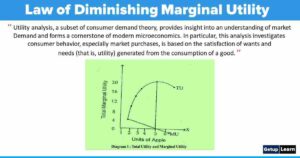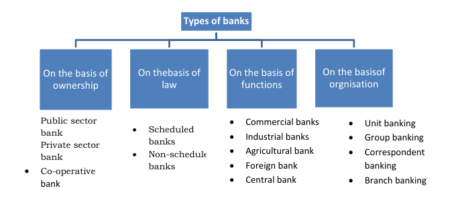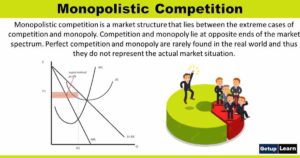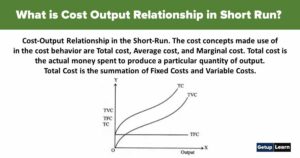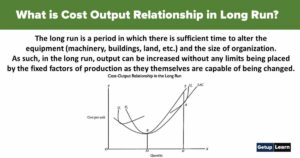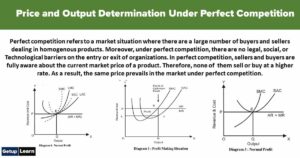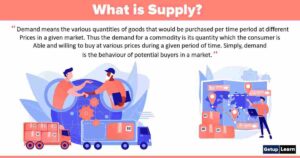Table of Contents
What is Meaning Monopoly Structure?
A monopoly is a market structure where there is a single seller/producer of a commodity or service. One firm one industry, restrictions on the entry of the firms in the industry, profit motive are some of the characteristics of the market. There are three situations: Profit, loss and normal profit during a short period and profit earning situation during the long period.
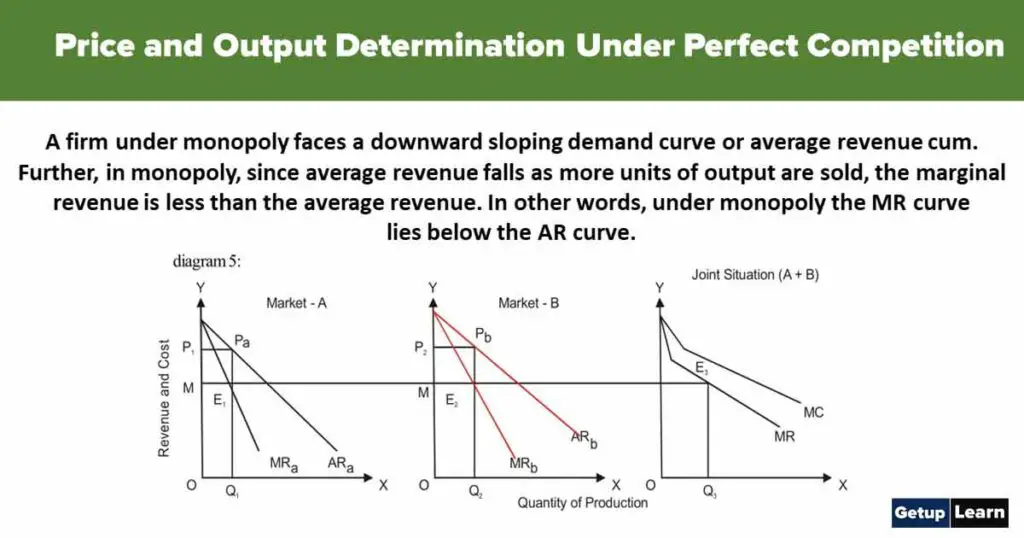
A discriminating monopoly is a market where a single seller/producer sells the product/service at different prices to different customers. An oligopoly is a market where there are a few firms producing homogeneous products or differentiated products. There is interdependence, the existence of price rigidity, the existence of monopoly elements and non-price competition.
Price and Output Determination under Monopoly during Short Period
Under monopoly price and output determination during the short period can be studied under three situations since one firm one industry is the salient feature of the market as given under:

Profit Making Situation
Under monopoly, the AR and MR are falling and its AC and MC are U- shaped. The output and price will be determined when the MC=MR and MC cut the MR from its below. When the AC is less than AR the situation will be of profit earning under monopoly. This situation can be seen from the following diagram 1:

The price, revenue and cost curves are shown on OY-axis while output on OX-axis. AR and MR are Average Revenue and Marginal Revenue curves while AC and MC are Average Cost and Marginal Cost curves of the firm. The point of equilibrium is E where MC=MR and MC cuts the MR curve from below. The price is OP and output is OQ. Average cost is below Average revenue and the firm’s average profit (AR-AC) is equal to ST while the total profit is PLTS.
Loss Incurring Situation

Monopoly firm will incur loss when its AC is above AR and the point of equilibrium will be when MC=MR and MC cuts the MR from below. It will determine the price, output and loss incurred by the monopoly firm as given under : The diagram indicates that at point E the firm is in equilibrium. The price and output are OP and OQ while average loss (AC–AR) is ST and total loss is equal to LPTS.
Normal Profit
Under monopoly market during short period the firm may earn normal profit also when AC curve is tangent to AR curve and the MC curve cuts the MR curve from its below. It will determine the price and output accordingly. This situation can be seen from the following diagram 3:
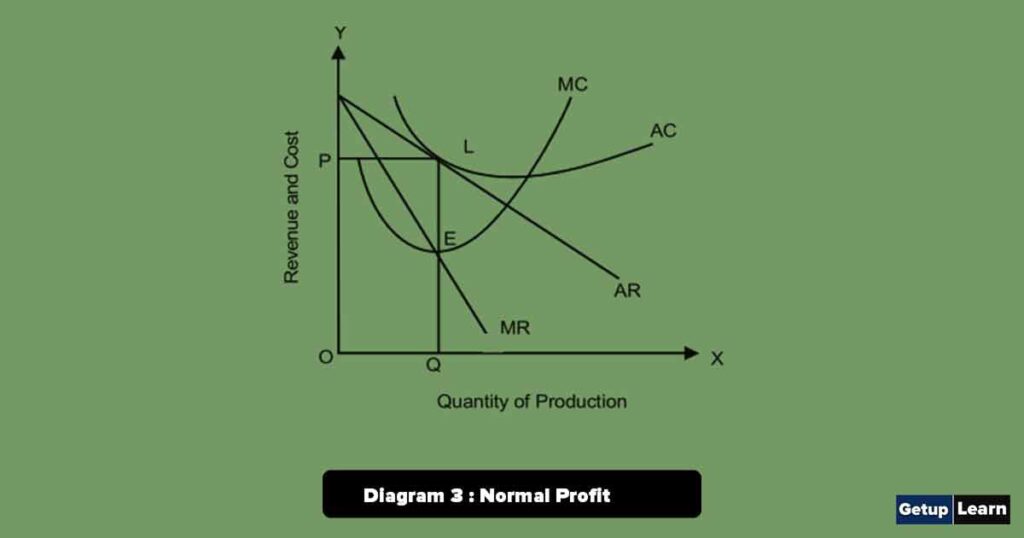
The above diagram depicts the Normal Profit situation. AC curve is tangent to AR curve at is point and the E point is the point of equilibrium of a monopoly firm where MC=MR and MC curve cuts the MR curve from its below. The price is OP and output is OK.
Price and Output Determination under Monopoly during Long Period
One of the salient features of the Monopoly market is the profit motive. During a long period, a Monopoly firm will earn profit only. The volume of profit will depend upon the operation of the Laws of Returns. The maximum volume of profit will be under the Law of Increasing Returns because of the decreasing cost while the minimum profit will be when the firm is operating under the Law of Diminishing Returns.
The profit under the Law of Constant Returns will be in between the maximum and minimum volume of Profit. The situation of Profit making under Monopoly market during long period can be seen from the following diagram 4:
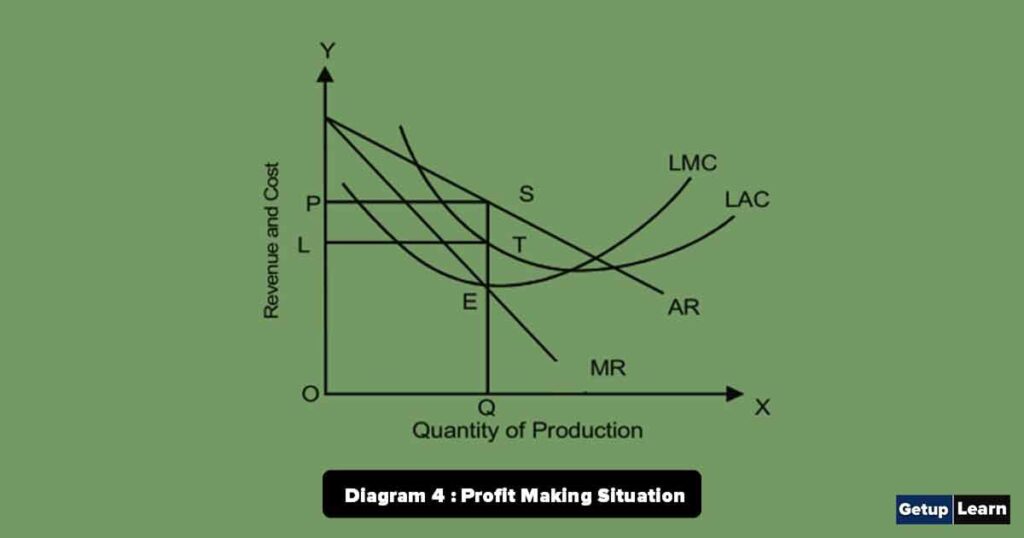
The diagram depicts the point of equilibrium at point E where MC=MR and MC curve cuts the MR curve from its below. The price is OP and the output is OQ. The average profit (AR-AC) is equal to ST and the total profit is equal to PLTS.
Price and Output Determination under Discriminating Monopoly
A discriminating monopoly is a market structure wherein a single seller/producer charges different prices from different customers for the same product or service. For example, electricity companies charge different prices per unit for domestic use and commercial use.
The price and output determination under discriminating monopoly is only possible when three conditions are met as given under:
- Single seller/producer of a commodity/service (Monopoly Market)
- There must be two separate markets.
- The elasticity of demand for the product/service should be different in both the markets.
The price and output determination under discriminating monopoly can be seen from the following diagram 5:
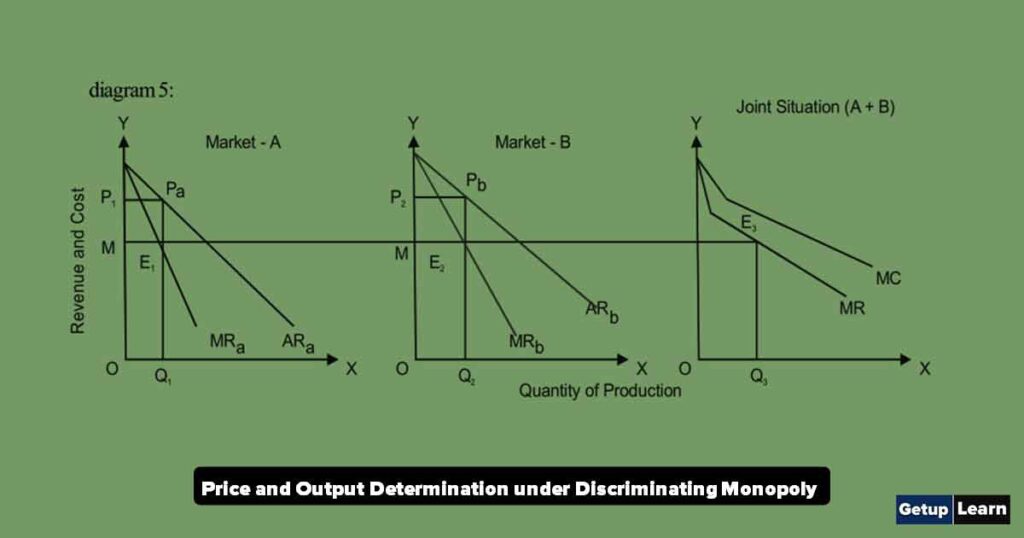
The diagram shows market A, Market B and the combined market. It reveals that three preconditions of discriminating monopoly are met. Market A has average revenue (ARa) and marginal revenue (MRa) while Market B has average revenue (ARb) and marginal revenue (MRb) respectively.
The last part of the diagram shows aggregate marginal revenue (SMR) while the marginal cost (MC) curve cuts the SMR at point E and from this point of equilibrium the line is drawn passing through Market B and Market A. It clearly tells us the price and output in both the markets as given under:
| Market | Price | Output |
| Market A | PaQa | OQa |
| Market B | PbQb | OQb |
While the combined market has OQ output which is equivalent to OQa + OQb. Market A has less elastic demand while Market B has highly elastic demand. Consequently, the price in A Market is higher than in Market B. Output is more in Market B.
Thus the discriminating monopoly is a realistic market. It is generally found in the case of public utility services wherein the ability to pay the price of a product/service is taken into consideration.
For example consumption of electricity, availability of drinking water and hospital services to the needy poor and the rich section of society. It is desirable to attain socio-economic objections as well as optimum utilisation of natural resources in the country.
What is Monopoly Structure?
The number and relative sizes of buyers and sellers in a particular market. Monopoly: Single seller/producer of a commodity or service complete restrictions to entry in the industry.
What is Price Discrimination?
Charging different prices from different customers by monopolists for the same product or service.
How price and output are determined in a monopoly market?
A monopoly is a market structure where there is a single seller/producer of a commodity or service. One firm one industry, restrictions on the entry of the firms in the industry, profit motive are some of the characteristics of the market. There are three situations – Profit, loss and normal profit during short period and profit earning situation during long period.


